Throughout the history of Thang Long - Hanoi, there are many tangible and intangible cultural heritages. Among the religious and belief monuments, the four guarding temples of Thang Long (Hanoi) , also called “Tứ trấn Thăng Long” in Vietnamese, the four temples worship four gods guarding the four main directions (East - West - South - North) for the capital. This is a special way of creating sacred space, reflecting boldly the life, culture and beliefs of the people of Thang Long - Hanoi.
The four temples of Thang Long include: Bach Ma Temple worshiping the god Long Do (The Guardian of the East), Voi Phuc temple worshiping Linh Lang god (The Guardian of the West), Kim Lien temple worshiping Cao Son Dai Vuong (The Guardian of the South), and Tran Vu temple worshiping Huyen Thien Tran Vu (The Guardian of the North).
Among the treasures of the four guarding temples of Hanoi, Tran Vu Temple is keeping a massive bronze statue of Huyen Thien Tran Vu, a sculpture masterpiece cast by the people in the reign of King Le Hy Tong (1677), worshiped in the north of Thang Long citadel, expressing the meaning of national defense, the resolute spirit of the Vietnamese people through the wars against foreign invaders a few centuries ago.
From a religious perspective, Quan Thanh Temple worships Saint Huyen Thien Tran Vu - a Taoist god who, through the process of Taoist development, has absorbed and harmonized with Vietnamese culture along with Buddhism and Confucianism. The harmony of the three religions in the relic space contributes to enhancing the values, history, culture and ideology of the Vietnamese nation.
BACH MA TEMPLE
Located at 76 Hang Buom Street, Hoan Kiem District, Hanoi, Bach Ma Temple is one of the four guarding temples of Thang Long ancient citadel.
Bach Ma Temple has a history of more than a thousand years. It is the first guarding temple in the four guarding temples of Thang Ling citadel associated with the legend of Cao Bien’s building La Thanh in 866 and King Ly Thai’s building Thang Long citadel in the 11th century. According to legend, when King Ly Thai To moved the capital to Dai La citadel, the building of the citadel encountered difficulties. The King asked the god Long Do to help settle the capital and build a new citadel, and he was told in a dream by the god that he saw a white horse.
The footprints of the white horse showed the king to build Thang Long citadel at any location that would be sustainable. When the citadel was completed, the king named the temple Bach Ma (White Horse) and ordained Long Do as the god protecting Thang Long.
Through the Ly, Tran, and Le dynasties with 52 kings settled in Thang Long, Bach Ma Temple is the place to most witness the establishment and development of Thang Long in the past and Hanoi capital at present.
Through many changes of history, Bach Ma temple has always been preserved, repaired and worshiped by the community. The relics of Bach Ma temple together with other relics in the four guarding temples of Hanoi affirm the typical historical and religious values of this relic complex in Hanoi.
Bach Ma Temple is an attractive destination for tourists to Hanoi. Every year, the Bach Ma Temple Festival is held on the 13th day of the second lunar month every year, in Hanoi's Old Quarter, attracting a lot of people from the capital and tourists from all over the world.
    |
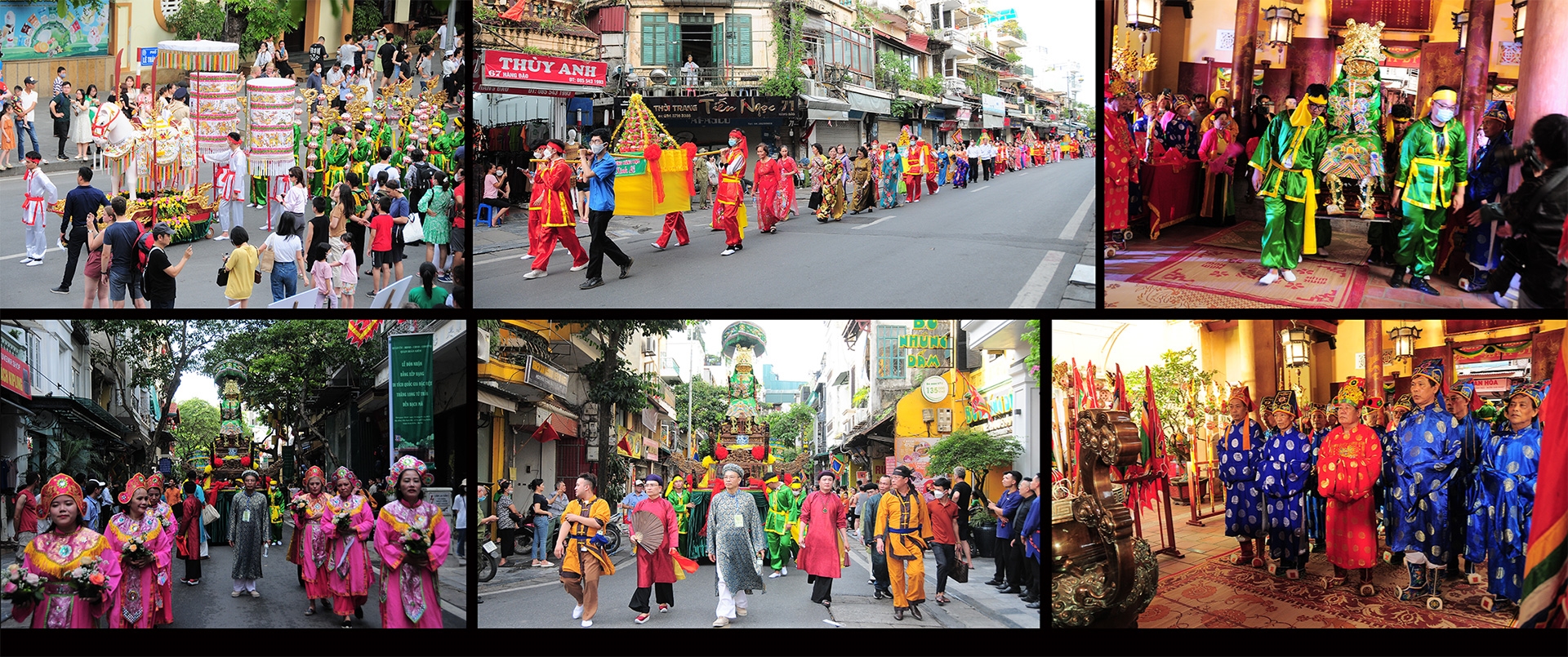 |
| The people of the capital held a procession according to traditional rituals on the occasion of the ceremony to receive the Certificate of Special National Monument of the four guarding temples of Hanoi – Bach Ma Temple. |
VOI PHUC TEMPLE
Possessing an ancient and majestic beauty, Voi Phuc Temple known as West Guarding Temple is one of the four guarding temples of Thang Long ancient citadel. It is located at Kim Ma Street, Ngoc Khanh Ward, Ba Dinh District, Hanoi.
    |
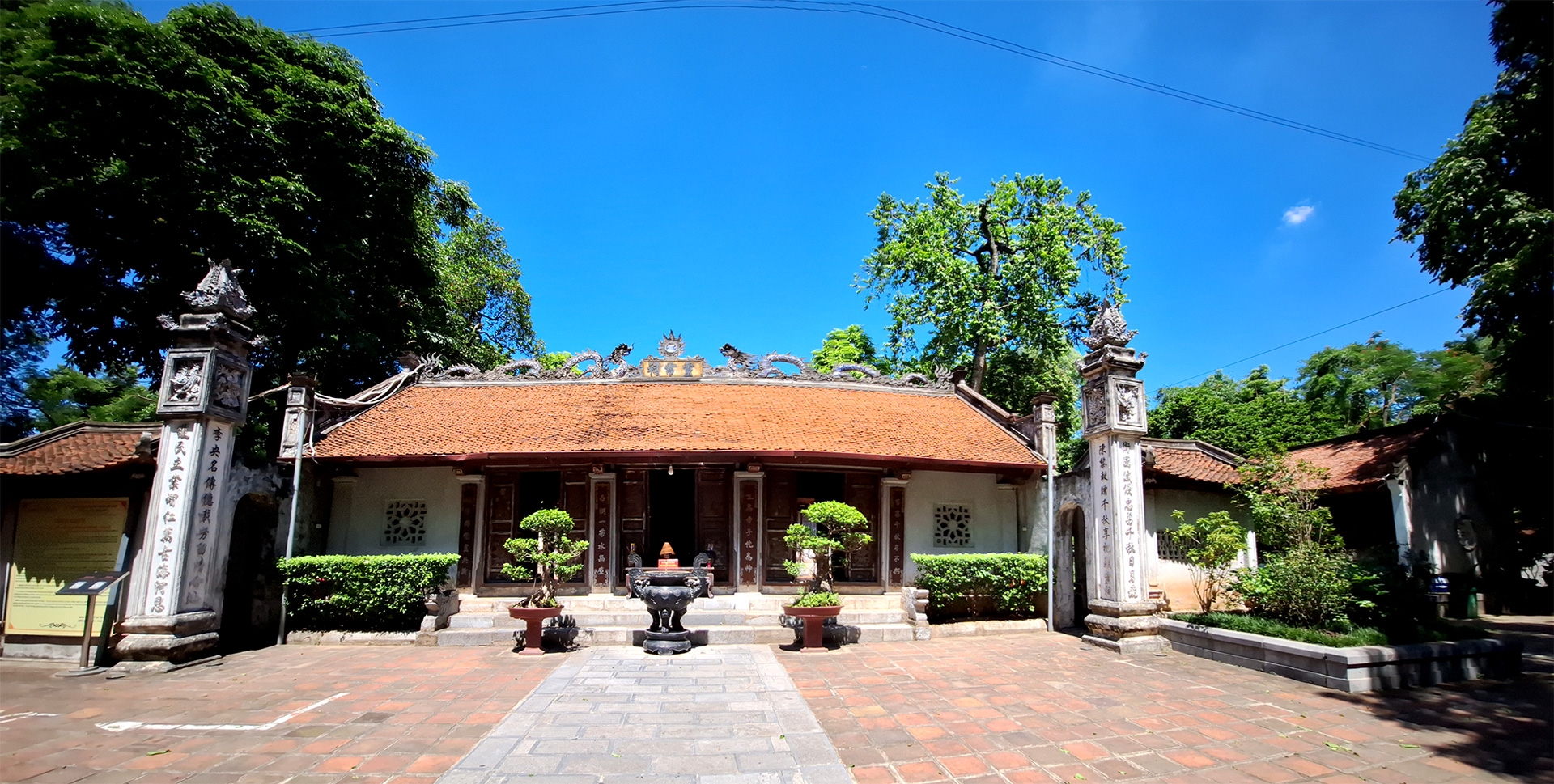 |
| Voi Phuc Temple is located on a flat and spacious mound. |
The temple is a place where worships Linh Lang Dai Vuong - a historical person who had merits to help King Ly Thanh Tong defeat Tong invaders and sacrificed himself.
Voi Phuc Temple was built in 1065 during the dynasty of King Ly Thanh Tong in the former Thu Le village, western Thang Long citadel, now in Ba Dinh District, Hanoi.
It is dedicated to Prince Hoang Chan, also known as Linh Lang Dai Vuong, the son of King Ly Thai Tong (1000–1054). The temple, however, was heavily damaged under French colonialism and rebuilt later.
The remaining objects of the relic site today are two elephant statues kneeling in front of the temple. Every year, to commemorate the merits of Linh Lang Genie, Voi Phuc Temple Festival is held from the 9th to the 11th day of the second lunar month.
Voi Phuc Temple is a place to help tourists to Hanoi learn about the history and culture of the country. A tourist from Nam Dinh said that she often read documents and update information about Voi Phuc temple. She added that the temple was not only associated with the legend of Prince Linh Lang, experiencing more than 1000 years of history, but also associated with magical spiritual stories.
    |
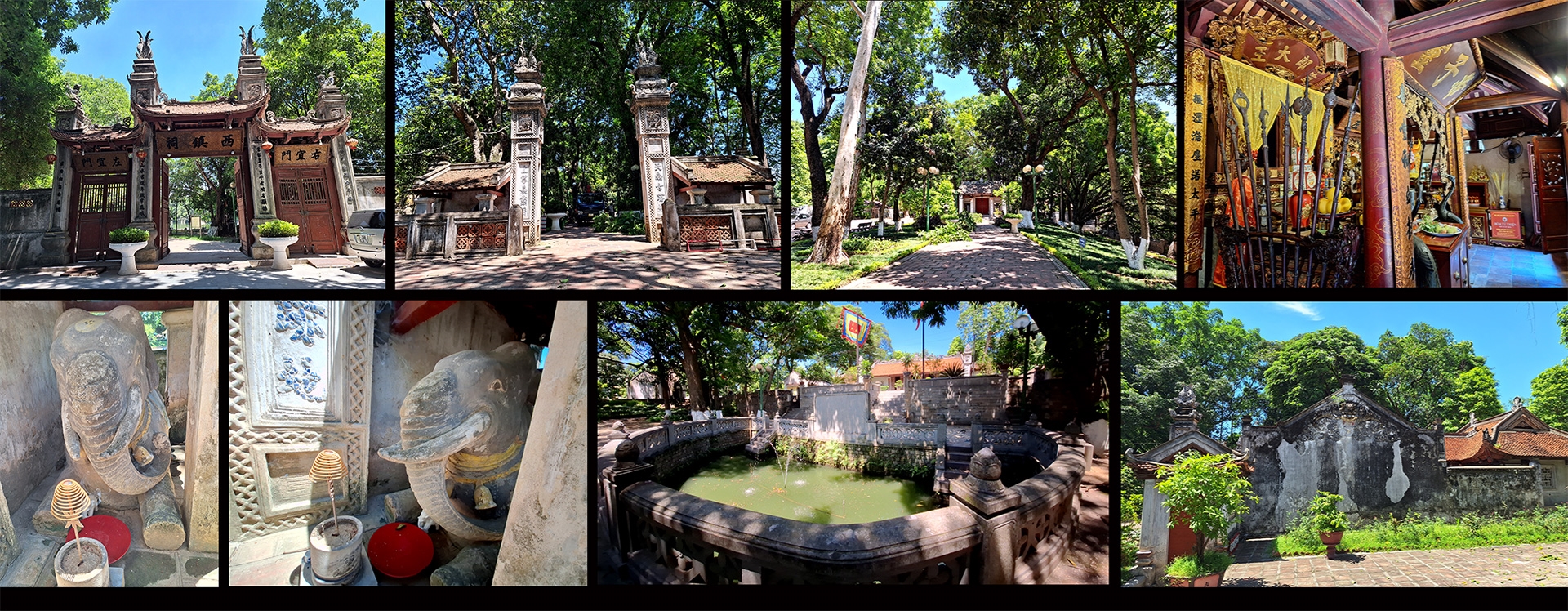 |
| Some architectural works of Voi Phuc Temple. |
KIM LIEN TEMPLE
During more than a thousand years of history, as one of the four guarding temples of Hanoi, Kim Lien Temple has always held a special position in the historical and cultural space of the land of Thang Long - Hanoi.
    |
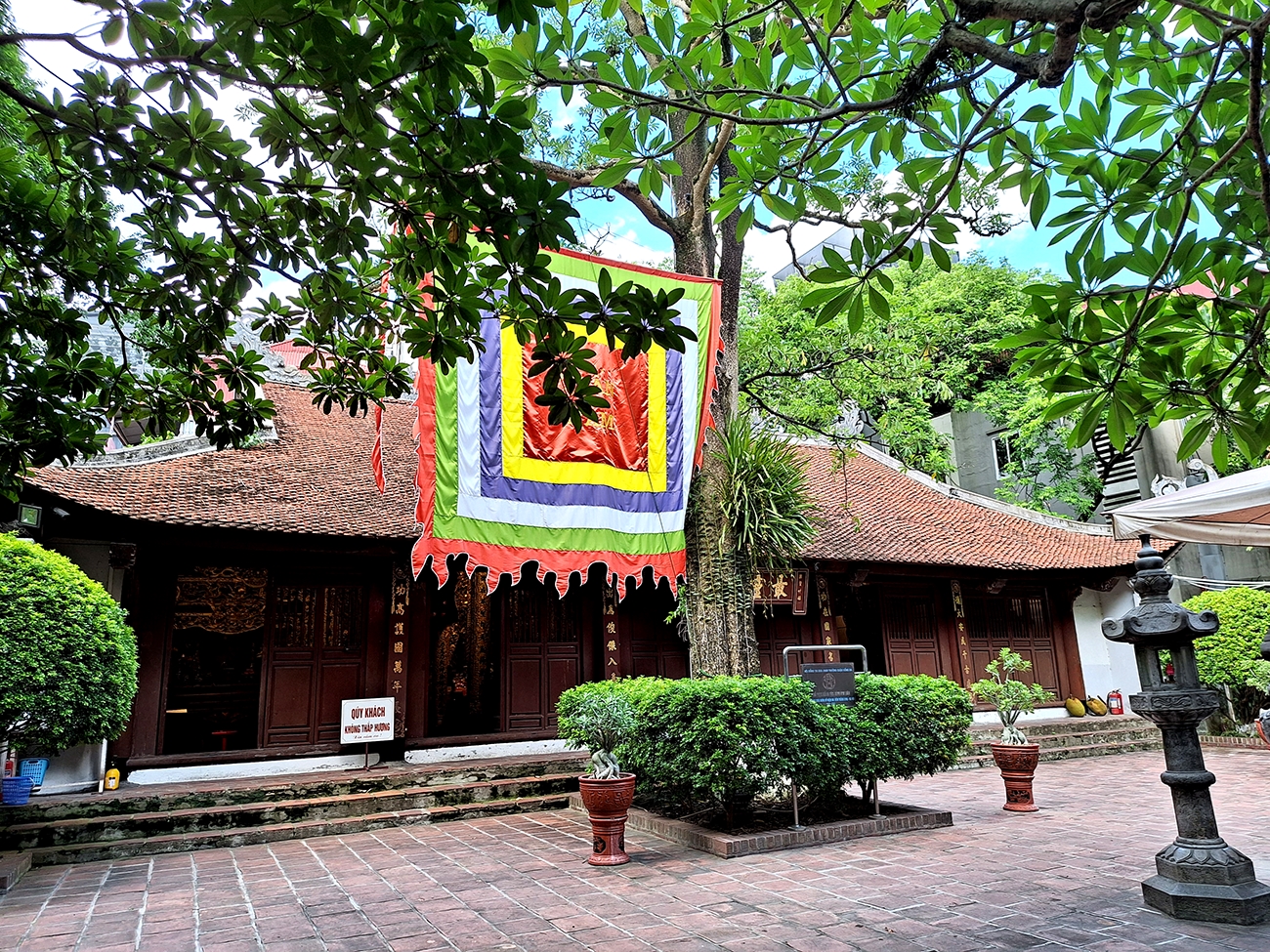 |
| A corner of Kim Lien temple. |
The Temple is located in Phuong Lien Ward, Dong Da District, Hanoi. It was built in honor of Cao Son Dai Vuong - the deity who secretly supported King Le Tuong Duc quelling the rebellions and restored him to throne (980 to 1009).
Kim Lien Temple was built in the 16th - 17th century to protect the north entrance of Thang Long Citadel.
The temple is dedicated for worshiping Cao Son Dai Vuong (Mountain spirit)- a deity who take care of farming works as well as protecting people from natural disasters.
    |
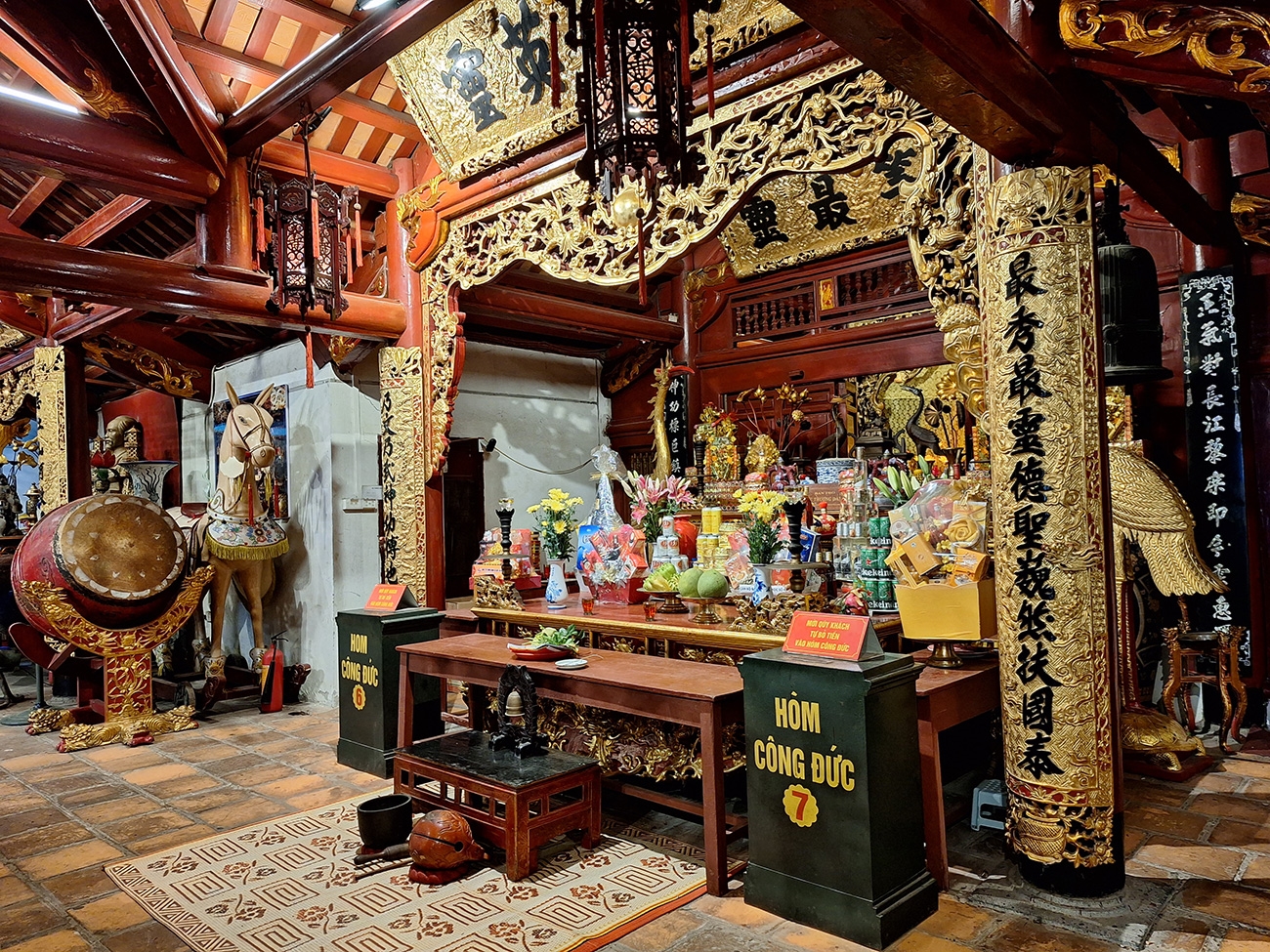 |
| The inner palace of Kim Lien temple. |
    |
 |
| The stele compiled in 1510 at Kim Lien Temple. |
It was recognized as a national historical and cultural relic on January 9, 1990 by the Ministry of Culture in the past (the Ministry of Culture, Sports and Tourism at present).
Kim Lien Festival Festival is held on the 15th and 16th of the third lunar month to commemorate the god Cao Son Dai Vuong.
TRAN VU TEMPLE
In the past, Tran Vu Temple, also called Quan Thanh Temple, is the guardian of the North in the four guarding temples of Thang Long. It worships Huynh Thien Tran Vi – the god who guarded the North of Thang Long citadel. That is why it is also known as the Tran Vu Temple.
    |
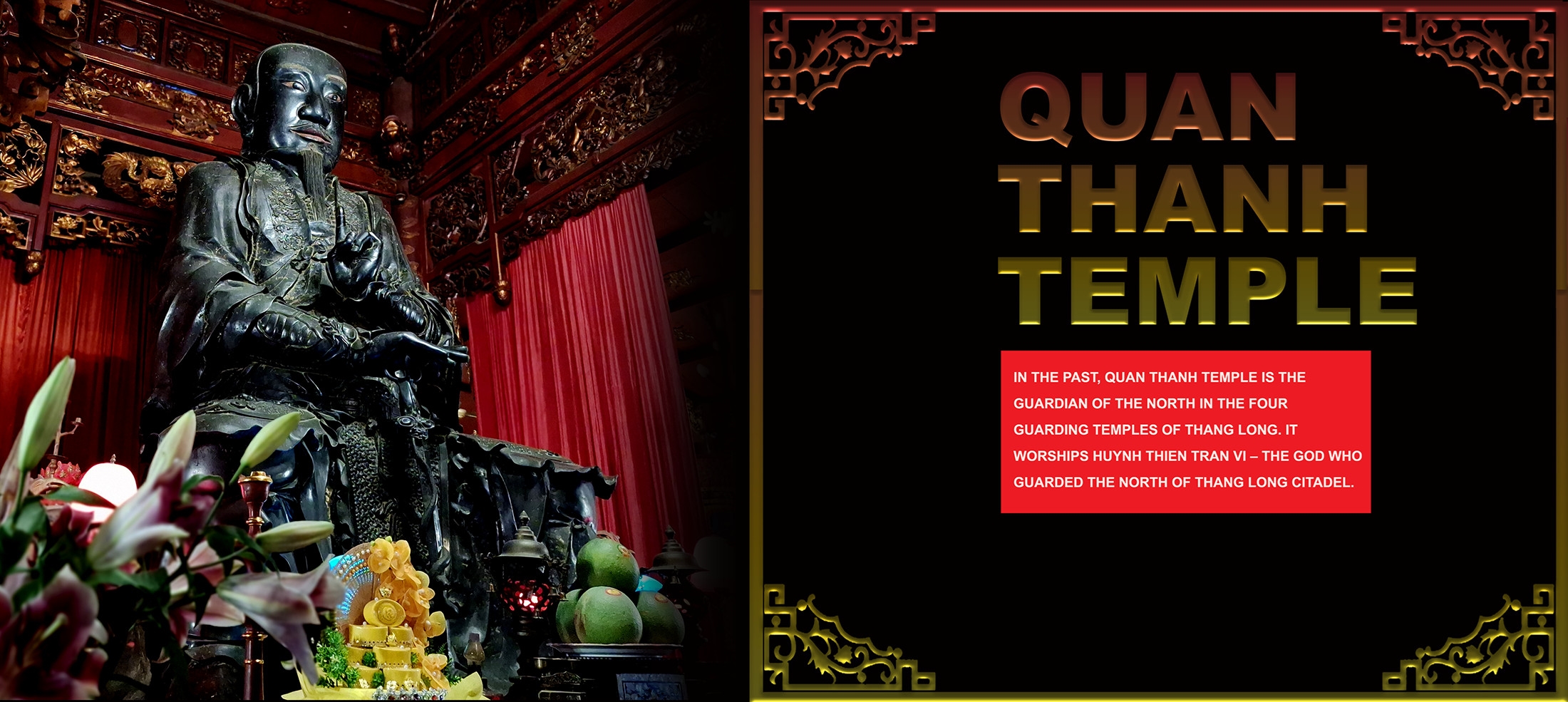 |
| Tran Vu Temple is also called Quan Thanh Temple . |
Quan Thanh Temple is opposite West Lake, at the intersection of Thanh Nien Street with Quan Thanh Street, Ba Dinh District, Hanoi. Along with the three above mentioned temples, Quan Thanh temple is a famous spiritual destination in Hanoi, attracting a lot of domestic and foreign tourists.
Legend has it that the Temple existed in the south of the To Lich River in the period of Cao Bien, a proconsul of the Chinese Tang Dynasty who built the citadel of Dai La (around 866).
After King Ly Thai To moved the capital to Thang Long in 1010, the Temple was moved to the north-west of the capital.
    |
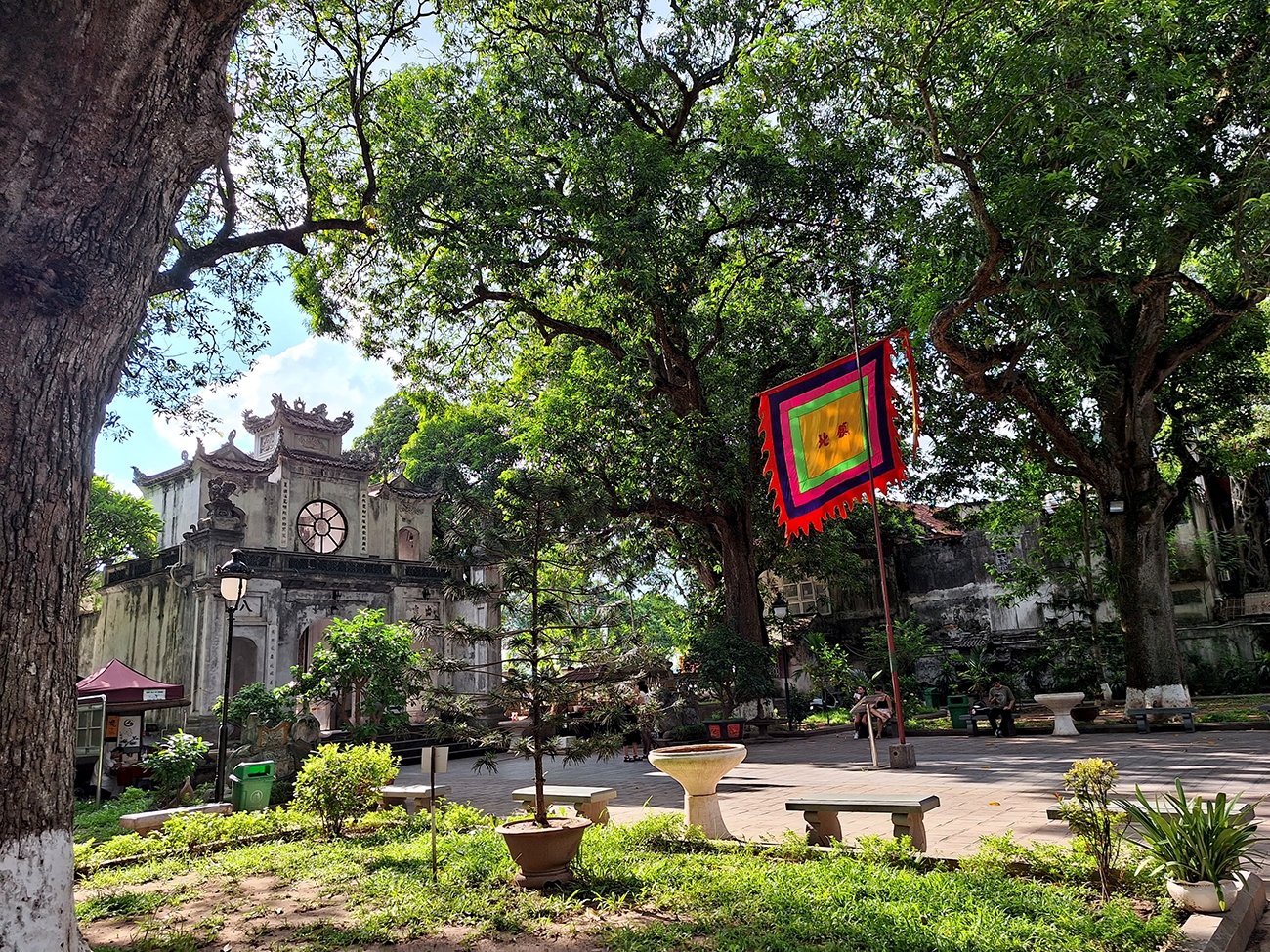 |
| A corner of Tran Vu Temple. |
The Temple has a majestic three-door entrance, which was built on large stones with a bell tower on its top.
Through the many ups and downs of history, the Temple has retained its unique structure, beautifying the landscape of Hanoi. It has become a famous religious cultural place of Hanoians and an important historical and cultural relic of the country.
CONTINUING HISTORICAL FLOW OF THANG LONG LAND
Continuing the historical flow of Thang Long land, cherishing the legacy left by the ancestors; on January 9, 1990, the Ministry of Culture, Information and Tourism ranked Kim Lien Temple as a National Historical, Cultural, and Architectural Relic; on December 22, 2016, the black bronze statue of Saint Huyen Thien Tran Vu was recognized as a National Treasure by the Prime Minister; On January 18, 2022, the Prime Minister signed Decision 93/QD-TTg on the ranking of special National Monuments for 5 monuments across the country, including the historical and architectural monuments of the four guarding temples of Thang Long.
Ancient Thang Long historical and cultural values are being preserved, handed down and promoted by the capital, helping to create a bridge connecting the past with the present. Especially, they become a cultural foundation affirming the cultural, heroic and peaceful traditions of a country, creating important cultural resources to exploit and develop the Capital in the integration era.
Thang Long - Hanoi, the intersection of two cultural flows helps the capital today own many titles awarded by UNESCO, many national historical and cultural relics. According to statistics, Hanoi has 5,922 historical and cultural relics, of which 21 relics - clusters of relics ranked as special national monuments by the Prime Minister; 1,182 relics are classified as city-level monuments; 1 world cultural heritage; 1 documentary heritage recogninzed by UNESCO.
In recent years, many international tourists to Hanoi are very interested in visiting and learning about Hanoi's old quarter, where there are small streets and ancient alleys intertwined, next to the Red River.
Mr. Tom Hiddleston, a British visitor who has been working for a long time in Hanoi, said, "Hanoi is more attractive than other cities in the world that I have been. It has the massive cultural heritage, containing fascinating historical stories, bold humanity hidden and displayed in traditional festivals."
Walking between the streets of Hanoi today, each person realizes the specific achievements of renovation, integration and development, and becomes more in love and proud of Hanoi Capital - a land that is shining with a new posture, appearance, new vitality, in the new era.
    |
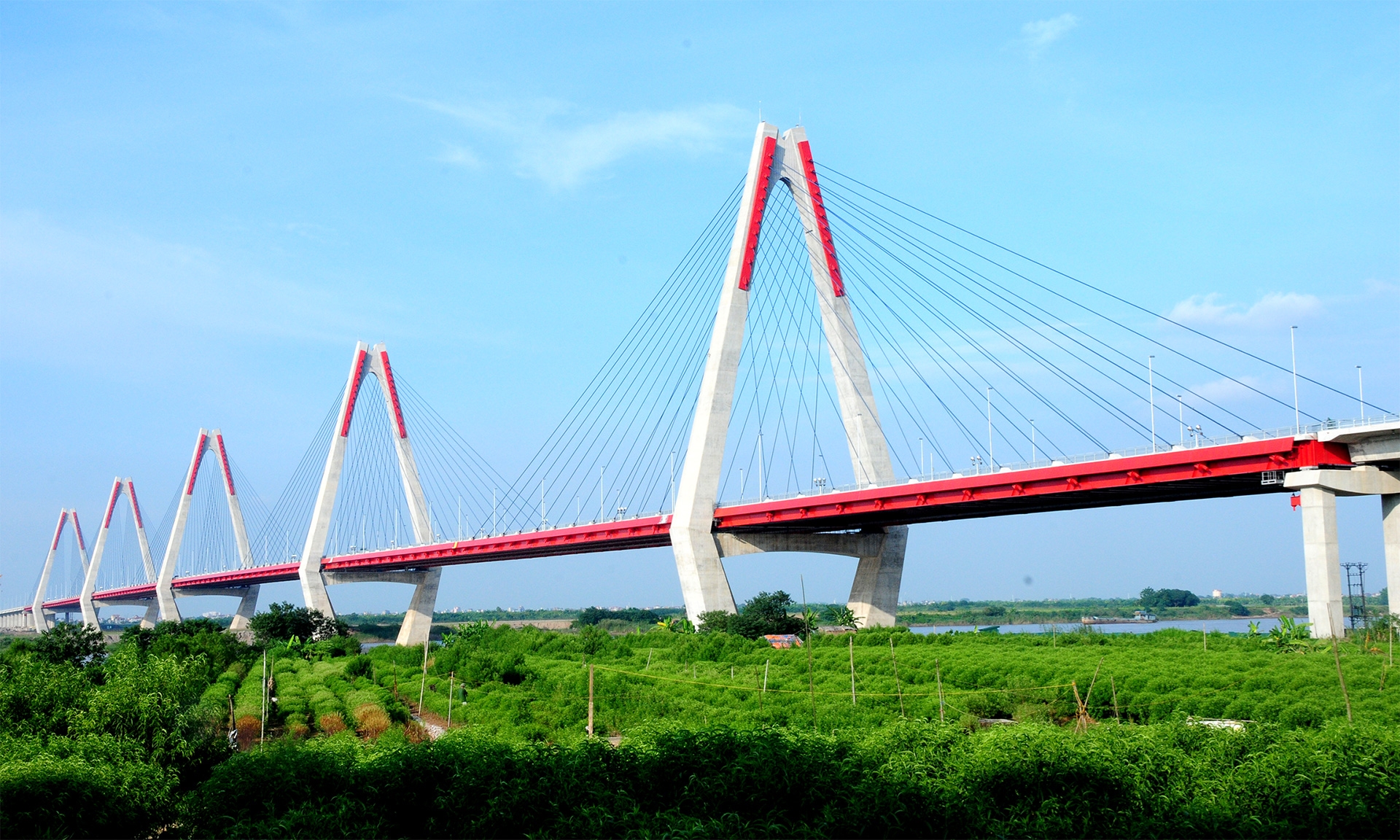 |
| Nhat Tan Bridge, a new symbol of Hanoi on the way of development and international integration. |